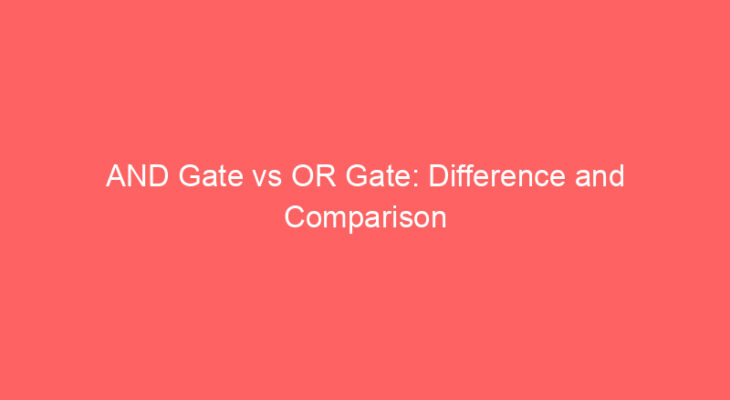Key Takeaways
- AND Gate outputs a 1 only if both inputs are 1, whereas OR Gate outputs a 1 if at least one input is 1.
- AND Gate performs logical multiplication, while OR Gate performs logical addition.
- AND Gate is more restrictive than OR Gate in terms of output conditions.
What is AND Gate?
AND Gate is an essential digital logic gate that implements logical conjunction from mathematical logic. It is an electrical circuit that combines two different signals so that the output is on if both signals are present. The working of the AND gate is based on the truth table. A HIGH output can only result from AND Gate if all the inputs are HIGH. Even if any input to the AND Gate is LOW, it results in LOW output. The output from the AND Gate is connected to the base driver, which is coupled to the transistors. The output of the Gate results in switching the transistors to opposite corners of the inverter.
The AND gate is named because it behaves as the logical “ and” operator. It requires one or two accurate inputs for the output to be actual. There are two applications of AND Gate: Enable gate and inhibit gate. Enable gate implies allowing data through a channel. On the other hand, inhibit gate implies disallowing data through the channel.
What is OR Gate?
OR gate is a logic gate that returns true if either or both inputs are true. It performs like a two-switch parallel supplying light. When either of the switches is closed, the light is still on. OR gate gets its name from its nature of behaving like the fashion of logically inclusive “or.” In the case of the OR gate, at least input one or two should be valid for the output to be accurate. If both the inputs are false, the output results in false.
OR gate can easily be constructed using the NAND or NOR gates. OR gates are utilized in circuits with multiple power sources. The advantage of using the OR gates in electrical circuits is that multiple signals can connect to output without interfering with the other outcomes.
Difference Between AND Gate and OR Gate,
- The logical expression of the AND gate is Y=A.B. On the other hand, the logical expression of the OR gate is. Y= A+B.
- The AND gate produces low output if its inputs are LOW. On the other hand, the OR gate produces LOW output only if all its inputs are low.
- The function of the AND gate is to find minimum binary inputs, while the OR gate is to find the maximum between the binary inputs.
- AND gate implements the logical conjunction. On the other hand, OR gate implements the logical disjunction.
- AND gate executes the logical multiplication while the OR gate is supposed to execute the logical addition.
Comparison Between AND Gate and OR Gate
| Parameter of Comparison | AND Gate | OR Gate |
|---|---|---|
| Definition | AND gate is the logic gate that performs multiplication of the binary input and signals to produce a single binary output. | OR gate is a logic gate that adds the inputs to give a single binary input. |
| Function | AND gate is similar to the two electric switches connected in series. | OR Gate is similar to the electric switches connected in parallel. |
| Representation, | The operations of AND Gate are represented using a (.) dot. | The operations of the OR gate are represented using (+) plus. |
| Rule | A HIGH output can only result in from AND Gate if all the inputs are HIGH | high output results even if one input is HIGH. |
| Application | Applications of AND gate are in Digital electronics and data transmission. | The major application of the OR gate involves automatic digital control, metal oxide Semiconductors, etc. |
- https://www.science.org/doi/abs/10.1126/science.285.5426.391
- https://trashworldnews.com/files/digital_logic_design.pdf




